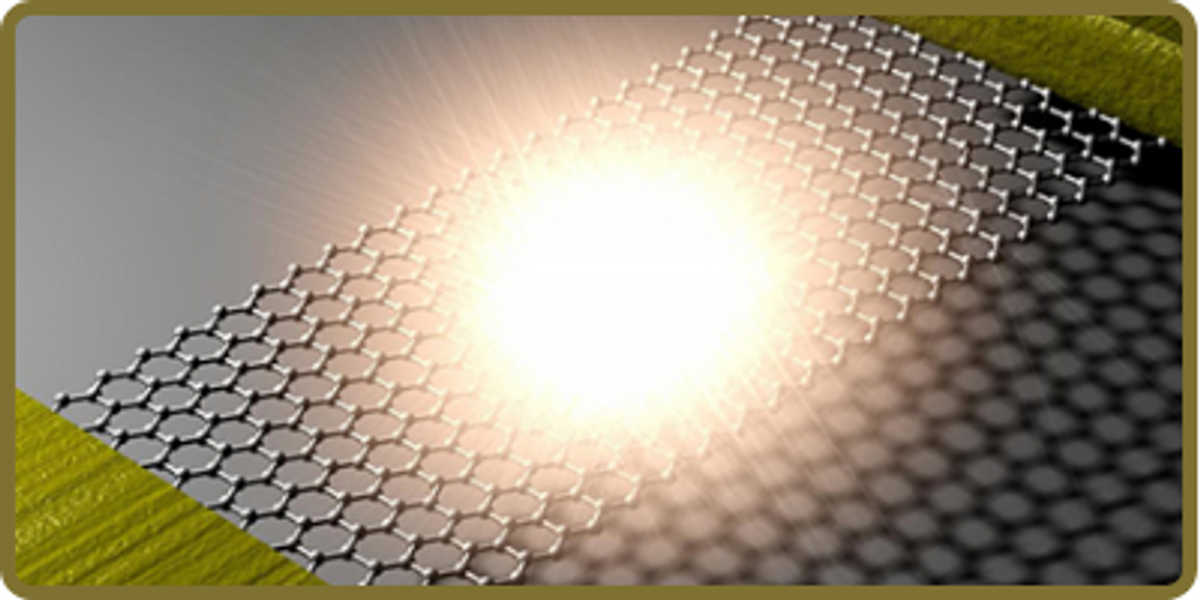Use of Graphene in Electronics
For a couple of years, we have been hearing the name of a material that seems to open the doors of a very promising future with extremely efficient and resistant electronic devices, capable of overcoming the present technological barriers of miniaturization: graphene. Graphene is the material that will mark the new era of electronics. It has the potential to revolutionize many aspects of our life at the same time.
About Graphene, the European Union has announced that it will invest a billion euros in research projects. This would make a huge qualitative leap forward by presenting flexible electronic devices, small biocompatible implants size, high-voltage lines or high-capacity memories. Thus, electronic devices would be moving away from one of the materials that has marked our technology in the last 70 years: silicon.
Read All Applications of Graphene here: 60 Uses of Graphene – The Ultimate Guide to Graphene’s (Potential) Applications in 2019
Read Everything you need to know about graphene here: Ultimate Guide to Graphene: Everything You Need to Know About Graphene
What is graphene?
Graphene is a material composed of pure carbon; in fact, its chemical composition is identical to diamond or graphite, the difference lies in the structure in which the atoms of this element are organized (known as allotropy). In the case of graphene, the structure of the atoms and the bonds between them form a kind of hexagonal structure that began to be studied in the 1930, but at that time, it was determined that it was an unstable material and not much attention was paid to it. We had to wait until Andre Geim and Konstantin Novoselov found it at the University of Manchester, a work for which they received the Nobel Prize in Physics in 2010. It was synthesized in 2004 by them and after this, scientists from all over the world are working on its development to improve current electronic devices and also to discover advanced technologies.
And why is graphene important for electronics? What can a carbon derivative contribute to the world of technology?
Graphene is a very flexible and resistant material (high elasticity and hardness, with a hardness much higher than that of steel and close to the diamond), it is transparent, it is capable of self- cooling and self-healing, it has a very low resistivity (it hardly heats up when transports current and, therefore, there are hardly any losses by Joules effect), consumes less energy than silicon and is also capable of generating electricity in the presence of light and, following the comparison with silicon, can also be doped with other materials to vary its properties.
Graphene Production
At this point, you will surely wondering if graphene has so many qualities and offers so many benefits, why it is not used to improve our quality of life.
The answer is simple. In order to preserve all its properties, the mineral must be of the highest possible quality. With the traditional method of obtaining by removing the graphite with adhesive tape, graphene of very high quality is obtained, but the quantity produced is minimal and is insufficient for industrial use.
On the other hand, the use of other methods for obtaining Graphene focused on increasing the quantity which caused a decrease in the quality.
Currently, graphene is sold in two forms: sheet and powder. What is the difference between them?
- Graphene Sheet: it is of high quality and is used in fields such as electronics, computers or even aeronautics, where a very resistant material is required. Its production is currently very expensive.
- Graphene powder: it is used in those areas that do not require a high-quality material. Its production process is cheaper and allows a greater production of the product, but renouncing part of its properties
The next great challenge for this material is the search for a method of production that overcomes the quality and high cost challenge. Different teams of scientists around the world dedicate their efforts to this end and although the results obtained are promising, there is still a lot to be done.
Read Nanografi’s Horizon2020 funded project for low-cost, high-quality and green graphene production: Nanografi's Horizon 2020 SME Instrument winner project: GREENGRAPHENE
Graphene in the field of Electronics
The properties presented by graphene have made this material postulated as a complement and even as a substitute for silicon in the field of electronics and integrated circuits, as well as the basis on which to build the coveted superconductors that allow us to evolve high voltage lines to transport energy efficiently to our homes.
Today, graphene is the axis on which a large number of researches from around the world revolve, both to develop material manufacturing processes and for their integration into electronic devices. In 2008, IBM announced one of its R&D works with graphene, developing transistors that worked at 26 GHz, a level that would surpass years later reaching 100 GHz and 300 GHz. Samsung is another of the companies that have worked with graphene in the development of transistors and presented the Barristor, a transistor of silicon and graphene that is ideal to work in applications with very fast commutations and open the door to the development of microprocessors capable of reaching hundreds of GHz or even reach the operating frequency THz.
And why combine graphene with silicon?
Gordon Moore, one of the founders of Intel, enunciated in April 1965 the well-known Moore’s law, a postulate that says that the number of transistors in an integrated circuit is doubled after every two years. This postulate is still valid: our microprocessors have more and more transistors and they are getting smaller and smaller. However, we are reaching the very limits of silicon. In other words, we are getting closer and closer to a transistor size that could not be further reduced without the risk of instability, a barrier that graphene can help overcome, that is why it is present in this new generation of transistors that it is being developed in many of these research centers.
In fact, both Samsung and UCLA (University of California - Los Angeles) are working on a research project to further miniaturize flash memories and overcome the 22 nanometer barrier to reach a target size of 10 nanometers. Smaller flash memories would allow us to substantially increase the storage capacity of our devices without increasing their size or shape factor, something that would benefit the smartphones, tablets and multimedia devices of the future.
Applications of Graphene in Electronics
There are already some products in the market that incorporate graphene, such as paints, electronic ink, batteries that charge faster or tennis rackets.

Novak Djokovic with Head's Graphene 360 tennis racket.
But the main applications of graphene, according to the researchers who work in its development, are coming. What we expect is that these materials with unique electronic characteristics give rise to unique electronic and optoelectronic devices. “We do not simply aspire to improve certain aspects a bit, but to improve a lot and to change the technology”, explains Pablo Jarillo-Herrero, researcher at MIT. He believes that it is difficult to predict when generalized electronic devices made of graphene, such as phones and flexible tablets will be available for common people, because such devices not only have to be good and work well, but must be cheaper than other technologies.
Graphene could be used in the manufacturing of microchips or transistors, both essential elements in virtually all electronic devices. There are several companies that are already developing conductive inks, which is a type of ink that conducts electricity and is used to print circuits, from graphene. In addition, due to its special characteristics, the electronic components of this material will allow the development of flexible devices that can be rolled or folded according to the requirement.

The use of graphene will allow the development of much faster computers and with a lower power consumption than current silicon. In addition, it is estimated that a hard drive of this compound, the same size as one of those currently used, could store up to a thousand times more information.
Moreover, Graphene would create a new generation of devices adapted to the physiognomy of the human being, without pre-established shapes or colors, with flexible, folding and tactile screens. Several recent studies have shown how graphene nano circuits could significantly improve the speed and quality of wireless communications. This type of products sounds almost like science fiction, because they have wonderful characteristics.
The future of electric mobility, as is known, depends very much on energy storage systems that are fast, reliable and economical. Graphene and water are the unprecedented combination proposed by the Department of Materials Engineering of the University of Monash, exploiting water as a separator element for graphene sheets. This is an alternative to the classic energy storage systems based on lithium ion technologies, with the advantage of guaranteeing a recharge in much shorter times and for long time as compared to normal batteries. This is an important application of graphene and must be studied further to make its use by common people.
The future of Graphene in Electronics
Graphene is opening the doors to a future of much smaller and more powerful devices: a world in which we can work with high-speed devices and transmit data wirelessly at speeds of the order of the terabits per second and visualize all this information in flexible screens that recover their original form after suffering any kind of deformation.
And when will this fascinating future come? The answer to this question is not simple, but there are some studies that point to 2024 as the date of the explosion of graphene. According to James D. Meindl, head of the nano electronics research center of the Georgia Institute of Technology, graphene will not replace silicon of commercial components and devices for more than 10 years, that is, until we reach a dead end in our current manufacturing processes. Although graphene is emerging as an innovative material, but the use of silicon cannot be ignored at the moment in the field of electronic. Both have their own valuable properties and uses. Graphene will simply do some things that silicon cannot do. It's like ships and planes. Planes have never replaced ships.
To recapitulate, Graphene is a fascinating material that, undoubtedly, will be present in batteries, screens and all kinds of electronic devices that will reach the market in the coming years. The use of Graphene in electronics is being explored due to its exceptional properties. It conducts electricity better than any other known material, it is very resistant, it does not break, it is flexible and transparent. Graphene is the material of the future and because of its thinness, it could be the key for researchers to develop better and cheaper electronic devices in the future. It is required to manufacture Graphene with extraordinary properties by new production method that is quick and inexpensive.
Recent Posts
-
Advanced Materials for Unmanned Aerial Vehicle (UAV) Protection Against Laser
Consider a UAV on a critical mission, rendered inoperative by a sudden laser attack. With the increa …26th Jul 2024 -
Simulation and Modeling of Material Properties
Our world is composed of a dazzling array of materials, each with its own unique properties that dic …19th Jul 2024 -
Advanced Coatings for Superior Corrosion and Wear Resistance
Corrosion and wear pose significant challenges across various industries, leading to substantial eco …12th Jul 2024






